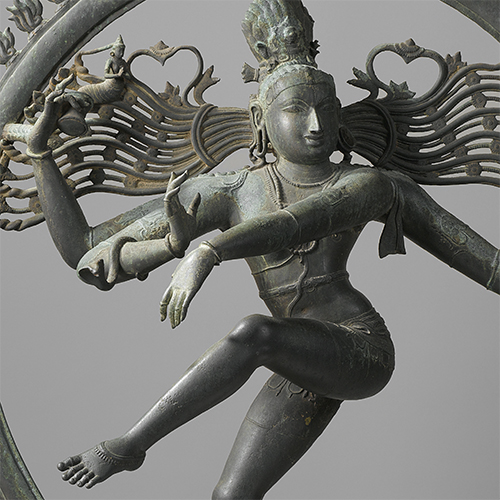Nataraja Informed through Text and Technique
A Study of the Monumental Indian Bronze at the Rijksmuseum
DOI:
https://doi.org/10.52476/trb.9714Abstract
The imposing Chola-period bronze Shiva Nataraja at the Rijksmuseum is a product of the living tradition of metal casting established over a thousand years ago in the region of Tamil Nadu. Purchased in 1935 from a Parisian dealer, it is one of the highlights of the collection belonging to the Royal Asian Art Society in the Netherlands, which is exhibited at the Rijksmuseum. The interdisciplinary study presented here links an art historical investigation of ancient texts and scholarly literature with scientific analysis in an attempt to refine the art historical context and at the same time flesh out what is known about the fabrication and provenance of the Nataraja in the Rijksmuseum. The Nataraja was cast by the lost-wax method; x-ray images confirm that the Shiva is solid-cast together with the halo. X-ray fluorescence reveals an alloy consistent with other Chola-period bronzes but not necessarily a pañcaloha alloy (five metals), which seems to be a modern tradition; the front hands were apparently cast on separately as a repair, probably during casting or not long after. Further evidence gathered from the sculpture and its soil encrustations (ICP-MS lead and neodymium isotope ratios, SEM-EDX and XRD) is briefly presented, and supports earlier assumptions about the Nataraja. It appears to date from the twelfth century and was under worship for a relatively short time before it was buried at an unknown location in India. The presence of Indian earth and corrosion products typical of burial imply that it did not re-enter a temple context for worship and was not subject to major restoration before entering the art market in the early twentieth century.
Downloads







